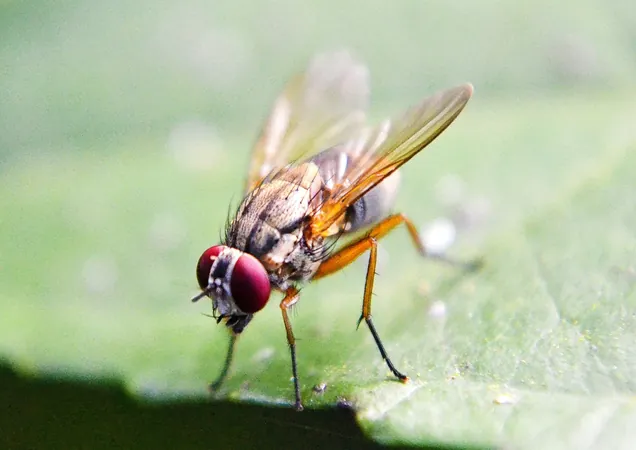
Unlocking the Secrets of Insect Perception: What Flies Really Feel When They Walk
2025-05-21
Author: Rajesh
How Do Flies Experience the World?
Have you ever wondered how the smallest of creatures perceive the stresses of movement? This question is not only pivotal for biology but also has implications in fields like robotics and neurobiology.
The Groundbreaking Research on Drosophila
A groundbreaking study led by Dr. Brian Saltin from the Bonn Institute of Organismic Biology unveils the intricate sensory systems of the fruit fly, Drosophila. Researchers have harnessed advanced computer modeling to dive deep into the tiny sensors located near the fly's leg joints, known as campaniform sensilla, which are crucial for detecting mechanical stress.
What They Discovered
The research team's simulations revealed a surprising finding: when Drosophila take their normal forward steps, the mechanical force from their footfalls isn't enough to activate these sensitive organs. This could change the way we understand how flies coordinate their movements despite having a simpler nervous system.
A Revolutionary Approach to Research
Using a combination of high-speed cameras, advanced motion analysis, and electron microscopy, the researchers meticulously traced both the external and internal structures of these sensory organs. The integration of the data helped them to create a comprehensive simulation that reveals how the sensory organs deform during movement.
Implications for Science and Robotics
This research not only enhances our understanding of insect physiology but could also pioneer new advancements in robotics. With the fly's uncomplicated neural framework serving as a model, these insights could illuminate fundamental neurological processes that apply to other species.
What's Next for Researchers?
With the revelation that ordinary walking doesn’t activate these sensory organs, the research team is keen to explore other behaviors, like walking upside down. This opens doors to further investigation into how various movements might engage the fly’s sensory systems across different positions and scenarios.
The Open Source Advantage
To push the boundaries of this fascinating research, the computer model is now available as open source. This accessibility invites scientists worldwide to apply it to other animals and diverse research inquiries, ultimately broadening our understanding of mechanical perception in the animal kingdom.
In Conclusion
As scientists delve deeper into the mechanics of insect perception, each discovery raises more questions than answers. The study of these complex organisms continues to be a riveting puzzle, one that promises to reshape our knowledge of biology and technology.



 Brasil (PT)
Brasil (PT)
 Canada (EN)
Canada (EN)
 Chile (ES)
Chile (ES)
 Česko (CS)
Česko (CS)
 대한민국 (KO)
대한민국 (KO)
 España (ES)
España (ES)
 France (FR)
France (FR)
 Hong Kong (EN)
Hong Kong (EN)
 Italia (IT)
Italia (IT)
 日本 (JA)
日本 (JA)
 Magyarország (HU)
Magyarország (HU)
 Norge (NO)
Norge (NO)
 Polska (PL)
Polska (PL)
 Schweiz (DE)
Schweiz (DE)
 Singapore (EN)
Singapore (EN)
 Sverige (SV)
Sverige (SV)
 Suomi (FI)
Suomi (FI)
 Türkiye (TR)
Türkiye (TR)
 الإمارات العربية المتحدة (AR)
الإمارات العربية المتحدة (AR)